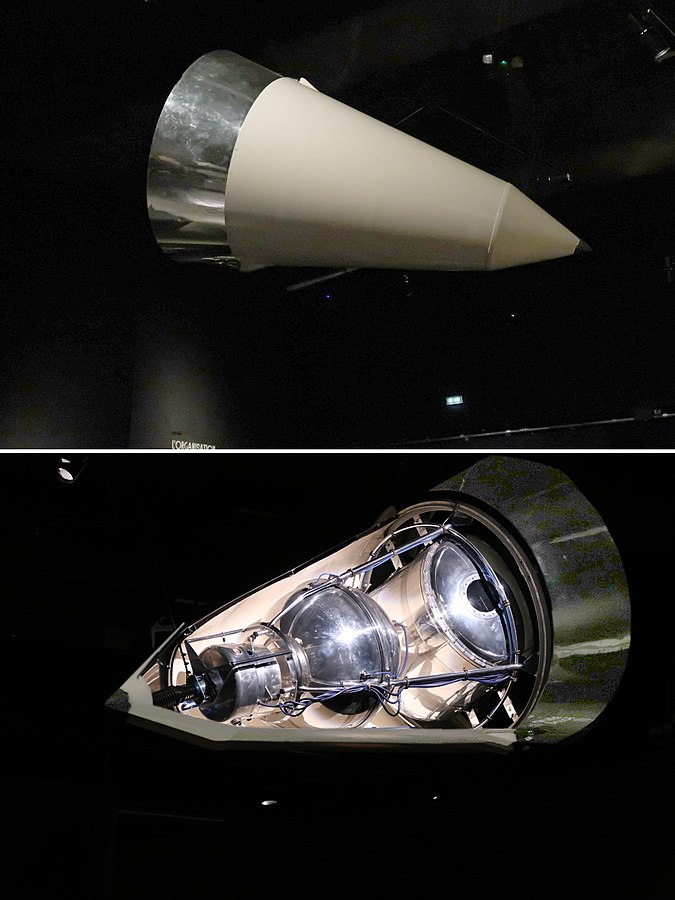Summary | Excerpt | Reading Guide | Reviews | Beyond the Book | Read-Alikes | Genres & Themes | Author Bio

This article relates to The Most
 Though the story unfolds largely through flashbacks, the present-day events of The Most occur on November 3, 1957, which is the day the Soviet Union launched its satellite Sputnik 2 into space. This date was chosen at the behest of Premier Nikita Krushchev to coincide with the 40th anniversary of the Bolshevik Revolution. Occurring at the height of the Cold War, the three Sputnik missions brought considerable consternation to the United States, which had announced its own plans to orbit Earth with a satellite in 1955, only to be upstaged by its Soviet nemesis with the launch of Sputnik 1 in October of 1957. To make matters worse, it was believed that the satellites were evidence that the Soviets could launch ballistic missiles capable of reaching the US.
Though the story unfolds largely through flashbacks, the present-day events of The Most occur on November 3, 1957, which is the day the Soviet Union launched its satellite Sputnik 2 into space. This date was chosen at the behest of Premier Nikita Krushchev to coincide with the 40th anniversary of the Bolshevik Revolution. Occurring at the height of the Cold War, the three Sputnik missions brought considerable consternation to the United States, which had announced its own plans to orbit Earth with a satellite in 1955, only to be upstaged by its Soviet nemesis with the launch of Sputnik 1 in October of 1957. To make matters worse, it was believed that the satellites were evidence that the Soviets could launch ballistic missiles capable of reaching the US.
Sputnik 2 was the second satellite to travel to space and, controversially, it carried the first living being to orbit the Earth: a stray dog named Laika, found on the streets of Moscow. The experiment of launching Laika into space was intended to provide information about what the effects of microgravity on a human body might be. According to a representative from the Smithsonian Air and Space Museum, Laika's journey was key to ensuring that spaceflight might be feasible for humankind: "There were things that we could not determine by the limits of human experience in high altitude flight … [Scientists] really didn't know how disorienting spaceflight would be on the humans or whether an astronaut or cosmonaut could continue to function rationally."
The satellite was 13 feet tall and 6.5 feet wide, and weighed around 1,100 lbs. Laika could sit or lie down in the cabin, where oxygen was generated, and she was provided with food and water "in a gelatinized form," according to NASA. It is unclear to this day how long Laika survived: the American Astronomical Society claims she must have died from overheating within hours of the launch. NASA maintains that she "probably only survived a day or two." In any case, there was only enough oxygen to last for 10 days.
The batteries on Sputnik 2's equipment died on November 10, preventing any further data from being transmitted, but it continued to orbit until April 14, 1958, at which pointed it reentered Earth's atmosphere and burned up. It had circled the Earth a total of 2,570 times.
The US finally launched its own satellite, Explorer I, on January 31, 1958. That same year saw the establishment of NASA, created in part in the hopes that an organization devoted to research and development in the area of space exploration would ensure the United States would not fall behind the Soviets again.
Model of Sputnik 2 at the Musée des Confluences in Lyon, France
Photo by Ismoon (CC BY-SA 4.0)
Filed under People, Eras & Events
![]() This article relates to The Most.
It first ran in the August 21, 2024
issue of BookBrowse Recommends.
This article relates to The Most.
It first ran in the August 21, 2024
issue of BookBrowse Recommends.
Your guide toexceptional books
BookBrowse seeks out and recommends the best in contemporary fiction and nonfiction—books that not only engage and entertain but also deepen our understanding of ourselves and the world around us.